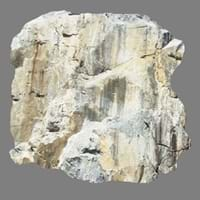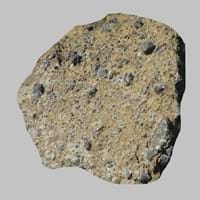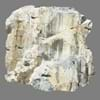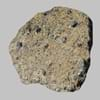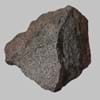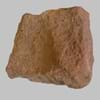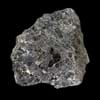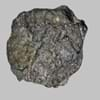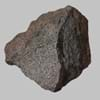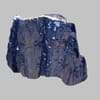Trondhjemite and Hyaloclastite
Definition
Definition
Trondhjemite is a leucocratic (light-colored) intrusive igneous rock. It is a variety of tonalite in which the plagioclase is mostly in the form of oligoclase. Trondhjemites are sometimes known as plagiogranites.
Hyaloclastite is an aggregate of fine, glassy debris formed by the sudden contact of hot, coherent magma and cold water or water-saturated sediment
History
Origin
Tonale, Italy
Unknown
Discoverer
Unknown
Unknown
Etymology
Not Available
From hyalo + -ite
Class
Igneous Rocks
Igneous Rocks
Sub-Class
Durable Rock, Hard Rock
Durable Rock, Soft Rock
Family
Group
Plutonic
Volcanic
Other Categories
Coarse Grained Rock, Fine Grained Rock, Medium Grained Rock, Opaque Rock
Fine Grained Rock, Opaque Rock
Texture
Texture
Phaneritic
Pyroclastic
Color
Black, Brown, Light to Dark Grey, White
Brown, Grey, Yellow
Maintenance
Less
More
Durability
Durable
Durable
Water Resistant
Yes
No
Scratch Resistant
Yes
No
Stain Resistant
Yes
No
Wind Resistant
No
No
Acid Resistant
No
No
Appearance
Banded and Foilated
Dull
Uses
Architecture
Interior Uses
Decorative Aggregates, Entryways, Flooring, Homes, Interior Decoration
Countertops, Decorative Aggregates, Homes, Interior Decoration
Exterior Uses
As Building Stone, As Facing Stone, Paving Stone, Garden Decoration, Office Buildings
As Building Stone, As Facing Stone, Paving Stone, Garden Decoration, Office Buildings
Other Architectural Uses
Curbing
Curbing
Industry
Construction Industry
As Dimension Stone, Cement Manufacture, Cobblestones, Construction Aggregate, for Road Aggregate
Building houses or walls, Construction Aggregate
Medical Industry
Not Yet Used
Not Yet Used
Antiquity Uses
Artifacts, Monuments, Sculpture, Small Figurines
Artifacts, Jewellery, Monuments, Sculpture
Other Uses
Commercial Uses
Cemetery Markers, Creating Artwork
Cemetery Markers, Creating Artwork
Types
Types
Not Available
Welded tuff, Rhyolitic tuff, Basaltic tuff, Trachyte tuff and Andesitic tuff.
Features
Is one of the oldest rock, Typically speckled black and white.
Always found as volcanic pipes over deep continental crust
Archaeological Significance
Monuments
Not Yet Used
Used
Famous Monuments
Not Applicable
Data Not Available
Sculpture
Used
Used
Famous Sculptures
Data Not Available
Data Not Available
Pictographs
Not Used
Used
Petroglyphs
Not Used
Used
Figurines
Used
Used
Fossils
Absent
Absent
Formation
Formation
When alkali feldspar is extracted from granite, it changes to granitoid and later, it becomes trondhjemite with quartz as major mineral.
Hyaloclastite is a type of Igneous rock is formed through the cooling and solidification of lava or magma.
Composition
Mineral Content
Albite, Amphibole, Apatite, Biotite, Feldspar, Hornblade, Ilmenite, Magnetite, Manganese Oxides, Olivine, Plagioclase, Pyroxene, Quartz, Sulfides, Titanite, Zircon
Calcite, Chlorite
Compound Content
NaCl, CaO, MgO, Silicon Dioxide
Hydrogen Sulfide, Sulfur Dioxide
Transformation
Metamorphism
Yes
Yes
Types of Metamorphism
Burial Metamorphism, Cataclastic Metamorphism, Contact Metamorphism, Impact Metamorphism, Regional Metamorphism
Burial Metamorphism, Cataclastic Metamorphism, Contact Metamorphism, Hydrothermal Metamorphism
Weathering
Yes
Yes
Types of Weathering
Biological Weathering, Chemical Weathering, Mechanical Weathering
Biological Weathering, Chemical Weathering, Mechanical Weathering
Erosion
Yes
Yes
Types of Erosion
Chemical Erosion, Coastal Erosion, Glacier Erosion, Sea Erosion, Water Erosion, Wind Erosion
Chemical Erosion, Coastal Erosion
Properties
Physical Properties
Hardness
6-7
1-2
Grain Size
Medium to Fine Coarse Grained
Fine Grained
Fracture
Conchoidal
Not Available
Streak
Bluish Black
Colorless
Porosity
Very Less Porous
Highly Porous
Luster
Subvitreous to Dull
Dull and Grainy
Cleavage
Not Available
Not Available
Toughness
2.1
Not Available
Specific Gravity
2.86-3
Not Available
Transparency
Opaque
Opaque
Density
2.73 g/cm3
Not Available
Thermal Properties
Specific Heat Capacity
0.92 kJ/Kg K
10
Not Available
Resistance
Heat Resistant, Pressure Resistant, Wear Resistant
Heat Resistant
Reserves
Deposits in Eastern Continents
Asia
Not Yet Found
Russia
Africa
Egypt
South Africa
Europe
Finland, Germany, Italy, Romania, Sweden, Turkey
Iceland
Others
Not Yet Found
Not Yet Found
Deposits in Western Continents
North America
USA
Canada, USA
South America
Argentina, Bolivia, Chile, Colombia, Ecuador, Peru
Brazil, Colombia
Deposits in Oceania Continent
Australia
New Zealand, South Australia, Western Australia
Not Yet Found
All about Trondhjemite and Hyaloclastite Properties
Know all about Trondhjemite and Hyaloclastite properties here. All properties of rocks are important as they define the type of rock and its application. Trondhjemite and Hyaloclastite belong to Igneous Rocks.Texture of Trondhjemite is Phaneritic whereas that of Hyaloclastite is Pyroclastic. Trondhjemite appears Banded and Foilated and Hyaloclastite appears Dull. The luster of Trondhjemite is subvitreous to dull while that of Hyaloclastite is dull and grainy. Trondhjemite is available in black, brown, light to dark grey, white colors whereas Hyaloclastite is available in brown, grey, yellow colors. The commercial uses of Trondhjemite and Hyaloclastite are cemetery markers, creating artwork.
|
||
|
||
|
